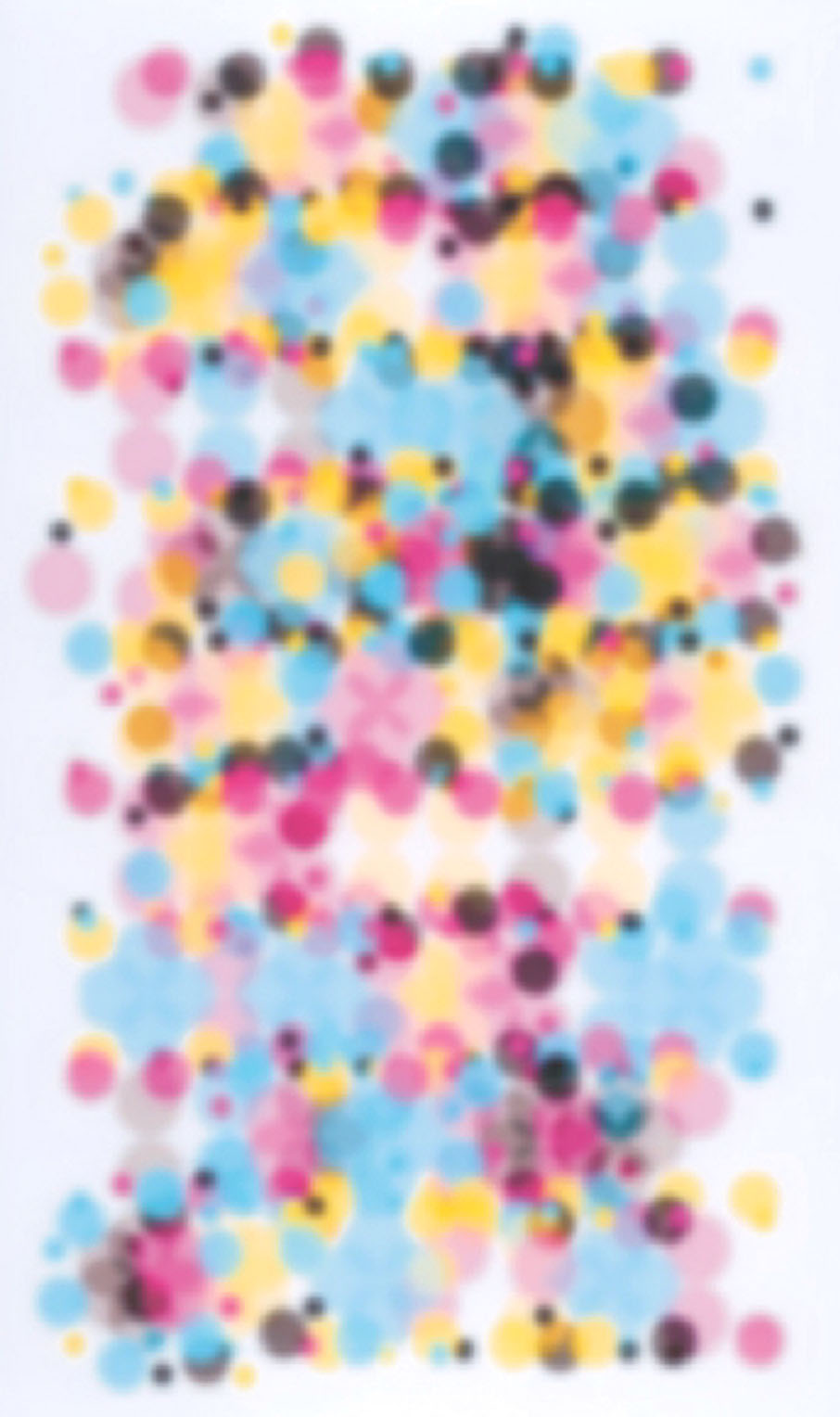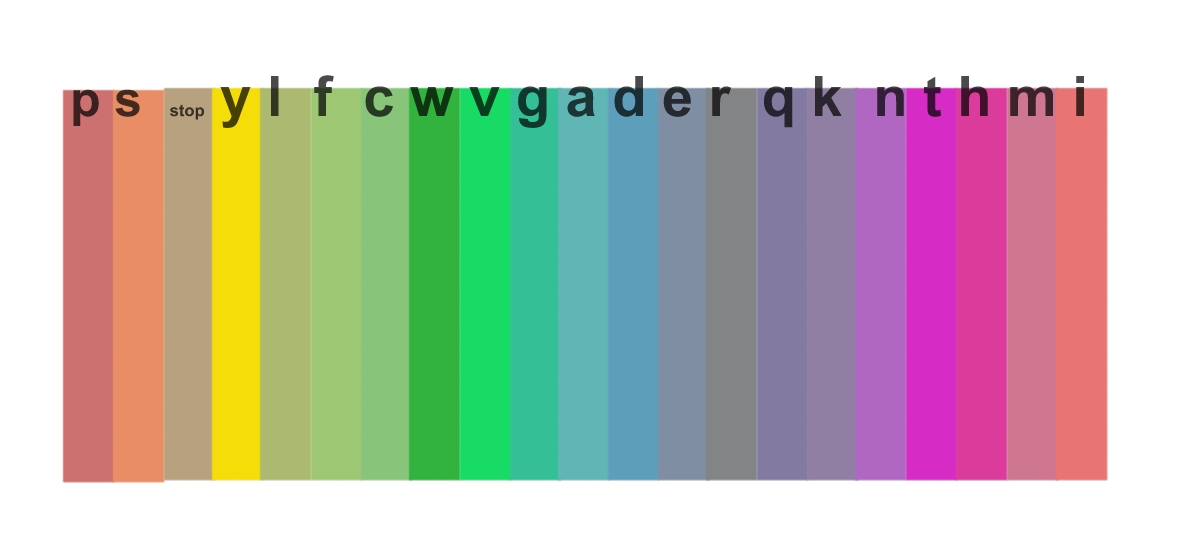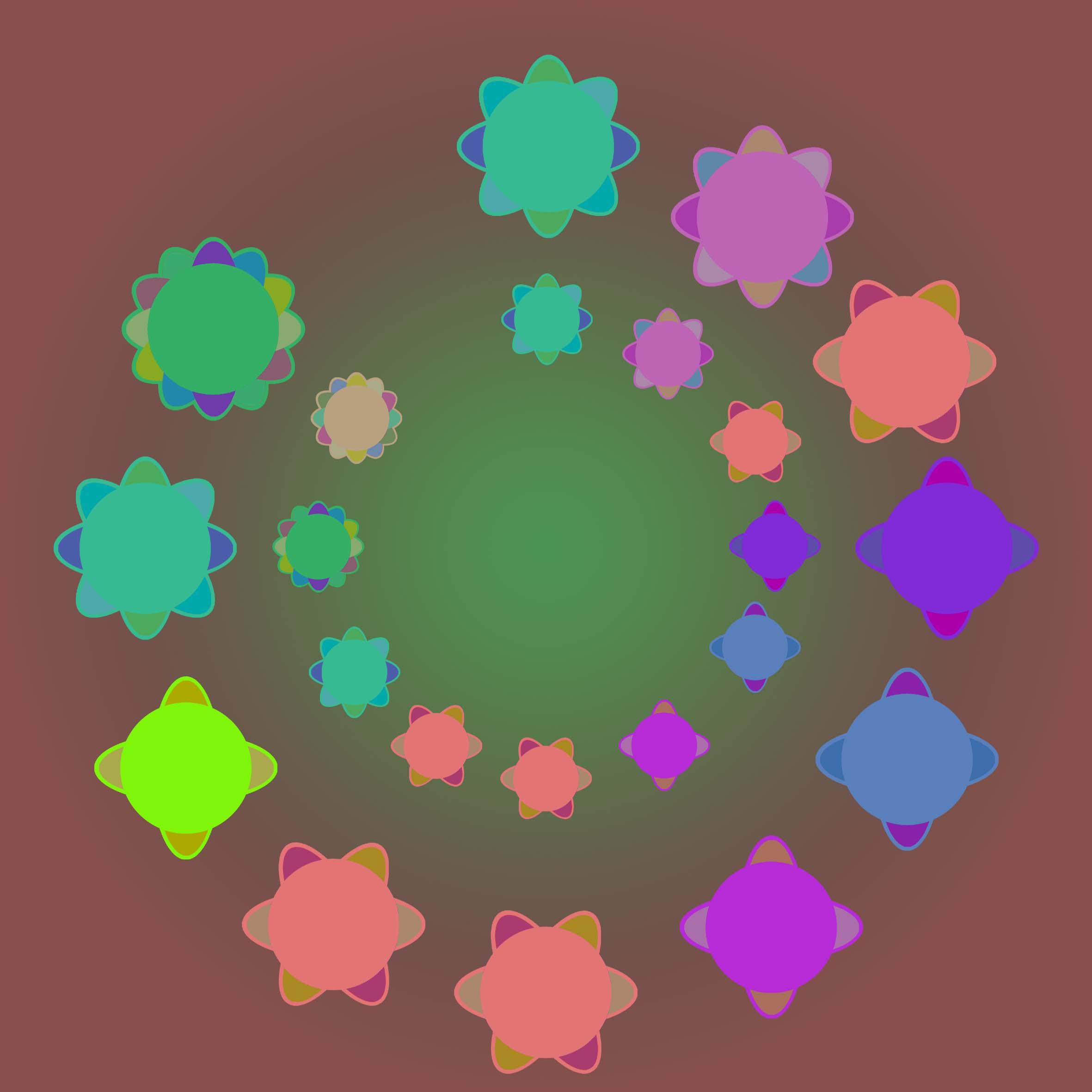
Huegene - A Genetically Derived Colour Palette
The idea behind Huegene came from conversations between myself and my brother, Dr Gary Robinson.
We wondered how could you create a colour representation of DNA data? And could we, by mixing and merging colours,
create a shorthand yet retain the richness of DNA information?
How can the colours be derived? Simply, we aligned the colours of process printing to the four bases of DNA. CMYK to AGCT.
We needed to align CMYK to AGCT in a way that would give the greatest general colour difference - through trial and error the greatest
colour difference results comes from using this alignment
A = Magenta = R255 G0 B255
G = Cyan = R0 G255 B255
C = K(Black) = R0 G0 B0*
T/U = Yellow = R255 G255 B0
*The K, Black, value of 0 in RGB does not allow us to create a percentage of the colour-
for this reason we have given the K value as 255/2 127.5.
In essence this makes the K value a saturation value for DNA at codons.
For each codon- three grouped colour/word - we have values where
The first letter/colour is 60% of RGB value
The second letter/colour is 30% of RGB value and
The third letter/colour is 10% of RGB value
So
The first letter will have a RGB value of 153,
The second letter will have a RGB value of 76.5(77),
and the third letter will have a value of 25.5(26).
For K, Black, these values will be ; first 76.5(77), second 38.25(38) and third 12.75 (13).
Having derived codon colour values the next stage is to derive amino acid colours.
This is done by first obtaining mean colour values according to codon translation.
Following the mean colour the next stage is to order the colours according to their hue value
and then split them equally across the 360 degrees of the hue wheel.
The final aim of the genetically derived palette is to create individual colours for protein sequences.
This is done by merging the colour values according to their position within the sequence and further
to merge colours within sub sections of sequences.
Below are some ways in which we have used the palette.
What Makes A Boy?




CF Sequence & Mutation
